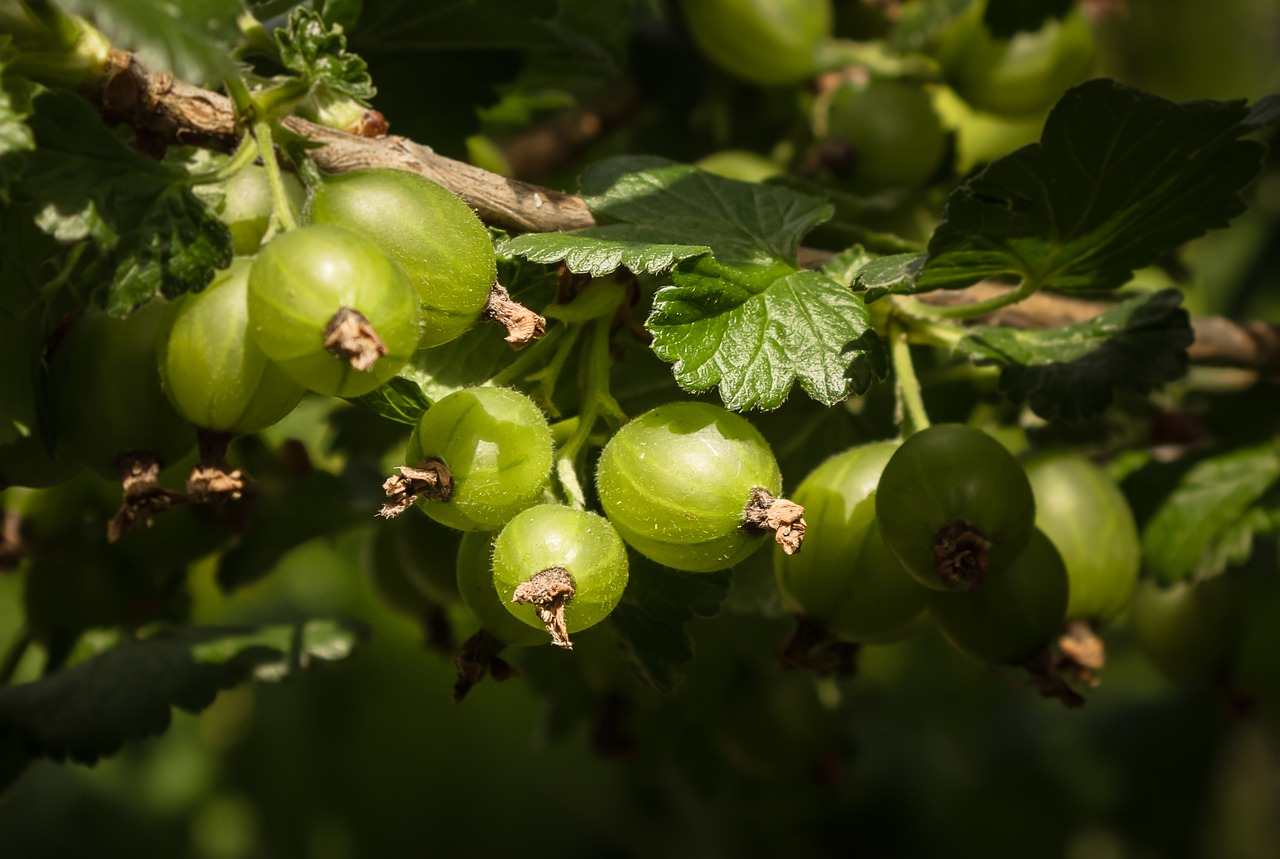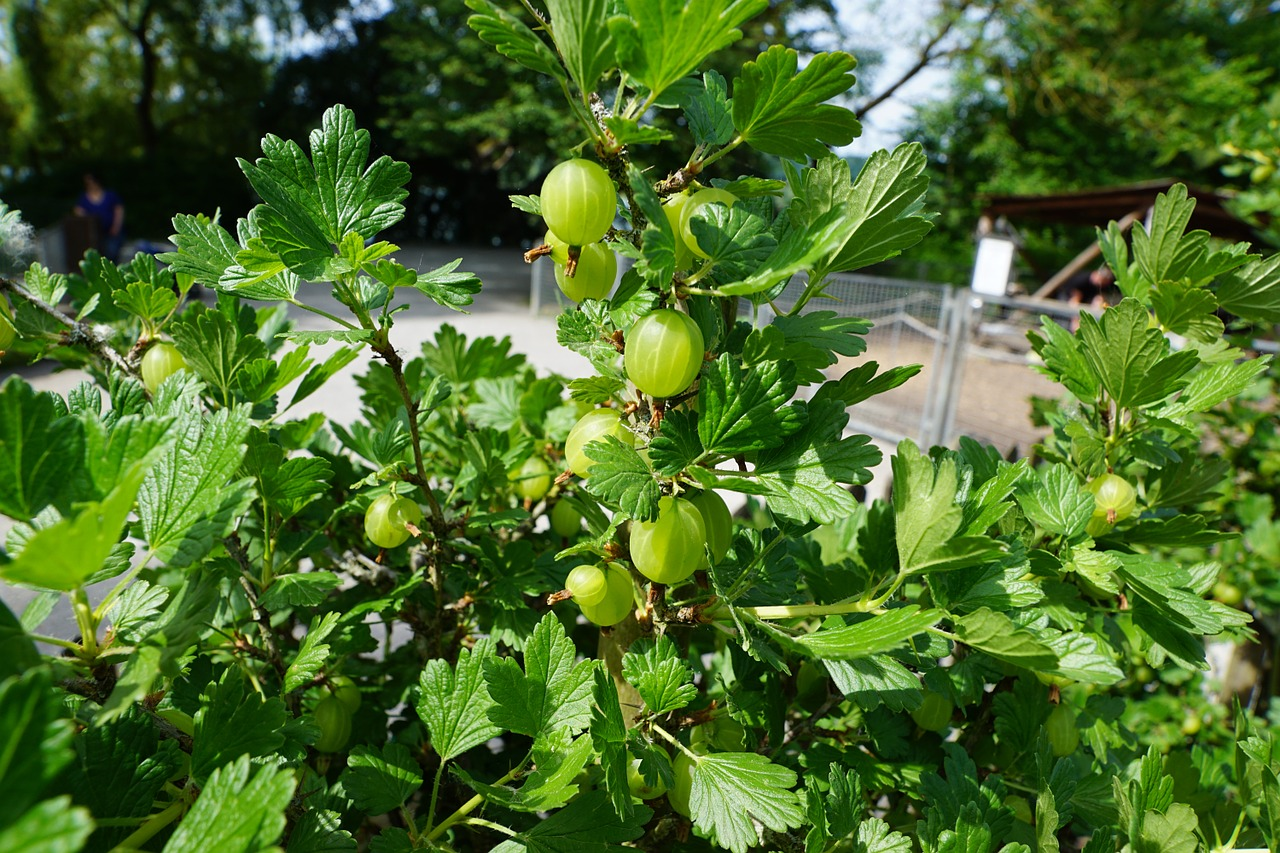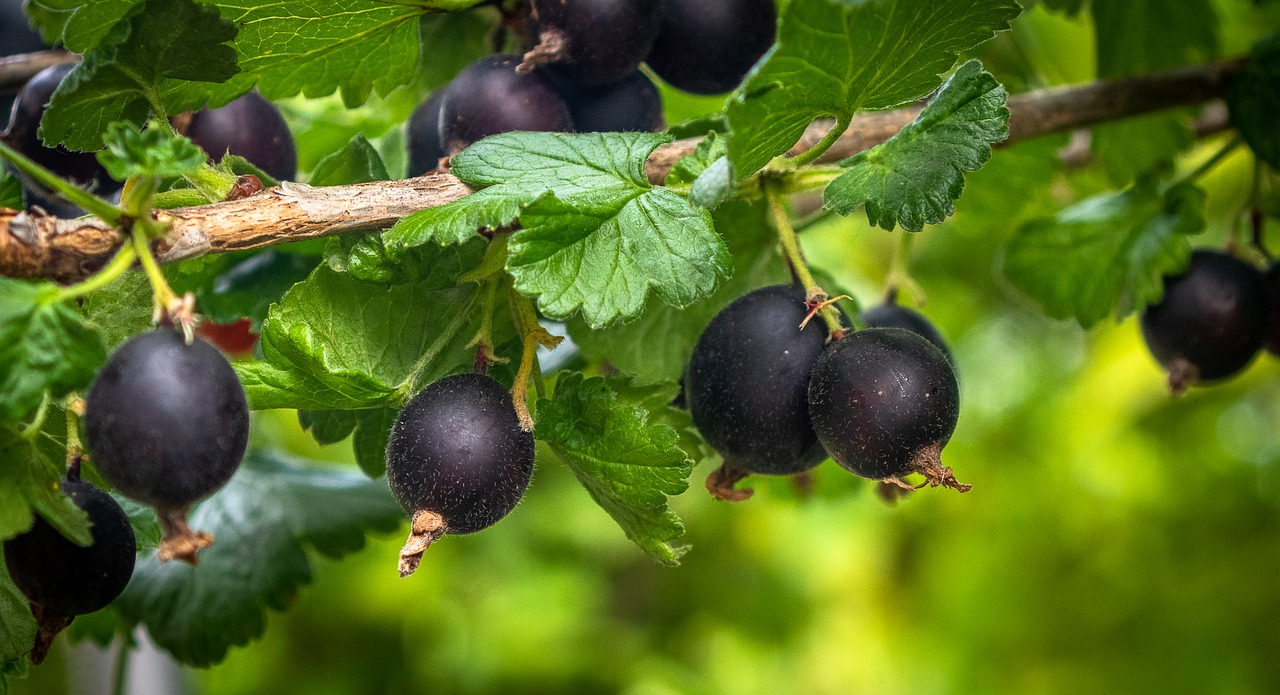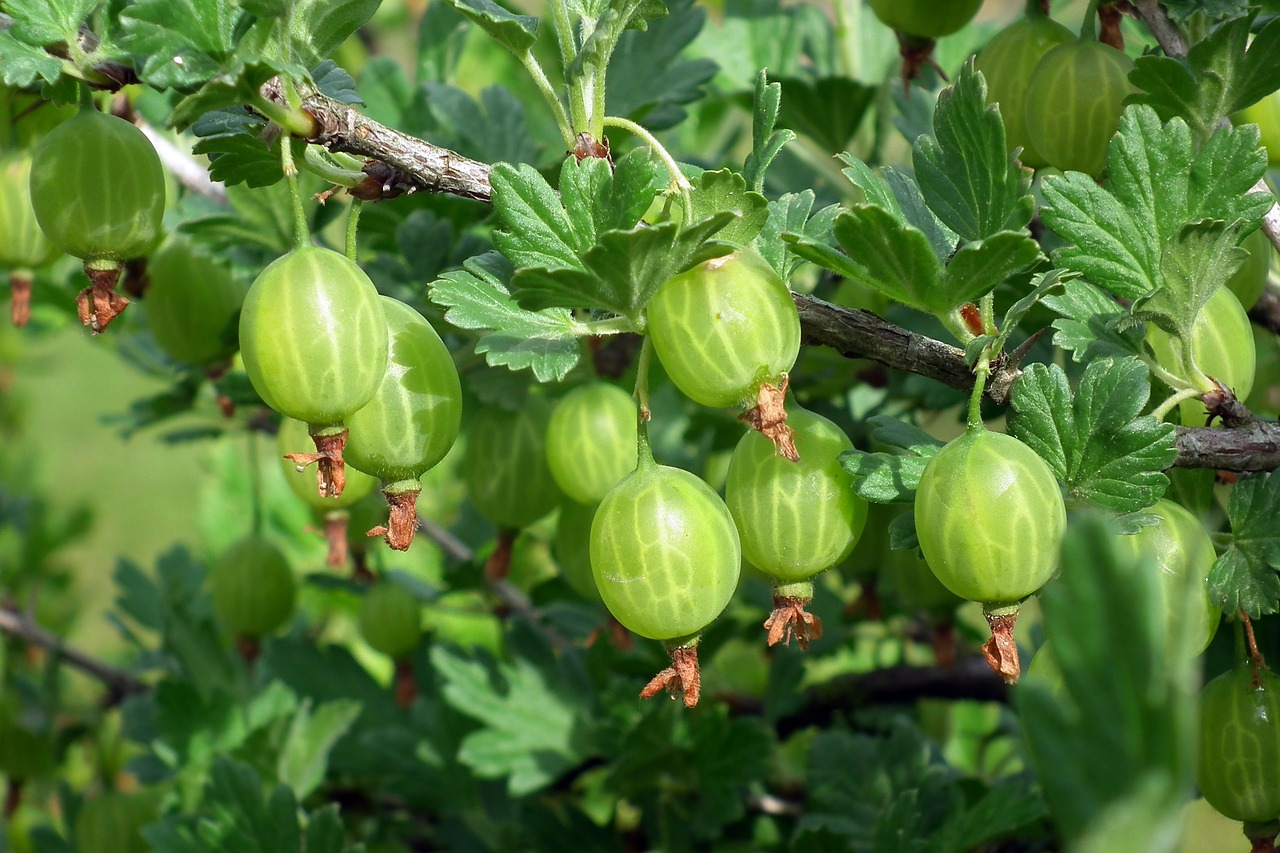Planting & pruning gooseberries
General information about gooseberries
The bushy, deciduous shrub belongs to the gooseberry family. There is a wide range of gooseberry varieties: varieties with green, yellow or dark red fruits and different shapes and sizes. Depending on the color, the fruits differ in taste.
Soil, location and mixed cultivation

- Gooseberries prefer to grow in nutrient-rich, loamy soil in an alkaline location - Choose a semi-shady spot, as the berries tend to get sunburnt from too much sun
- Good companion plants: yarrow, garlic, lily of the valley, tangetes, blueberries, currants, lemon balm, marigold, chives, gooseberries, tomatoes
Planting out

- Timing: in late fall between October and November or in early spring until April at the latest
- Planting distance: between 0.8 and 2 m/0.9 and 2.2 yd depending on growth habit
Instructions for planting out

- Before planting: Loosen the soil deeply
- Dig a planting hole
- Carry out a root pruning for bare-root plants
- Plant the shrub at ground level
- Apply a layer of mulch and water well
- Prune the plant: shorten all shoots by a third
How to increase your yield enormously

Although gooseberries are self-pollinating, you can increase your yield by planting plants of the Ribes genus next to each other. This also includes varieties of currant or jostaberry. These plants can also pollinate the flowers of your gooseberries.
Gooseberry care

- Fertilize once a year before budding in spring
- Apply a layer of mulch and renew regularly
- Remove weeds regularly by hand
- Water regularly in dry weather
- Thin out the shrub after flowering
- Check regularly for pests or diseases
Prune gooseberries annually

- When. Annually in spring (February - March) during a rain-free period of about three days
- Pruning measures: Shorten the strongest five to six shoots by a third; Remove three to four year old, worn out leading shoots; Remove inward growing side shoots and dead wood; Make sure the shoots are evenly distributed
- One-year-old side shoots must be left standing in any case, because the fruit ripens on them!
MrGajowy3 on Pixabay.

